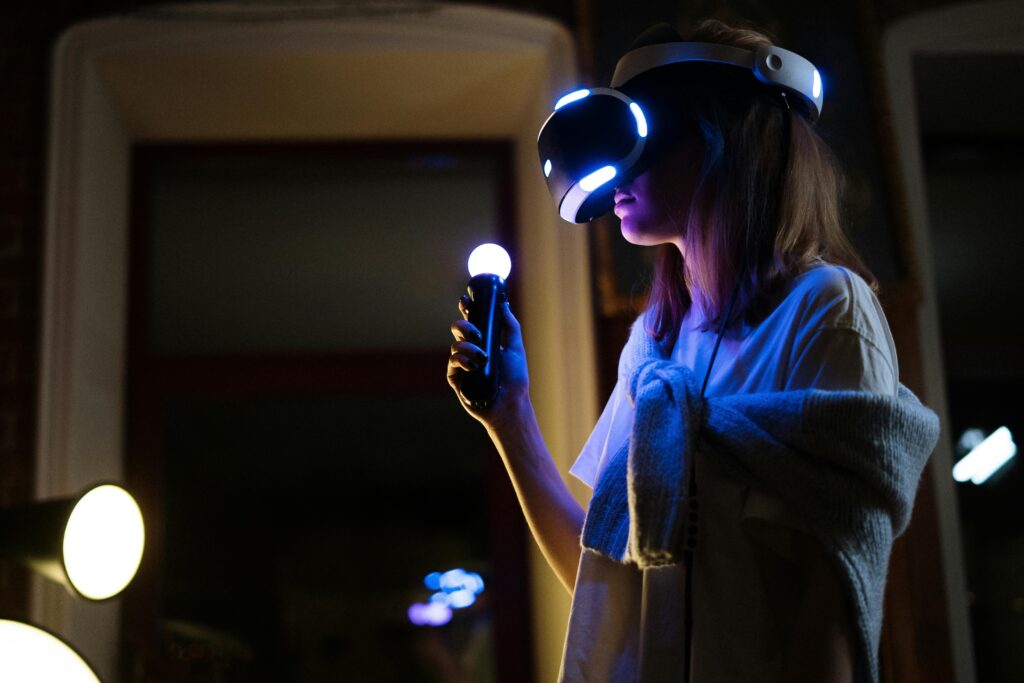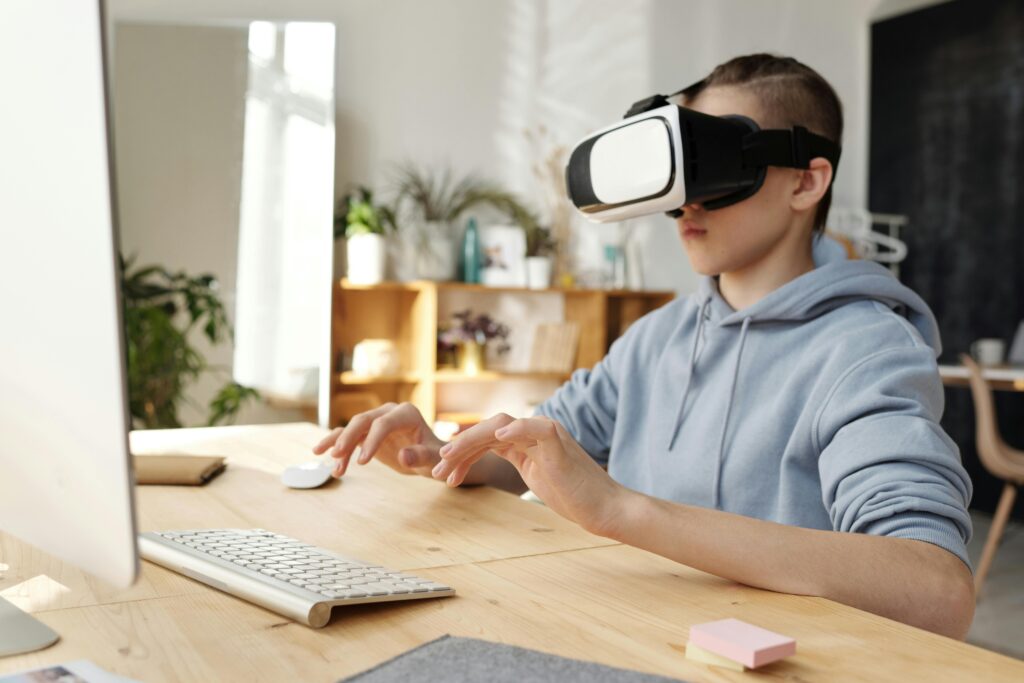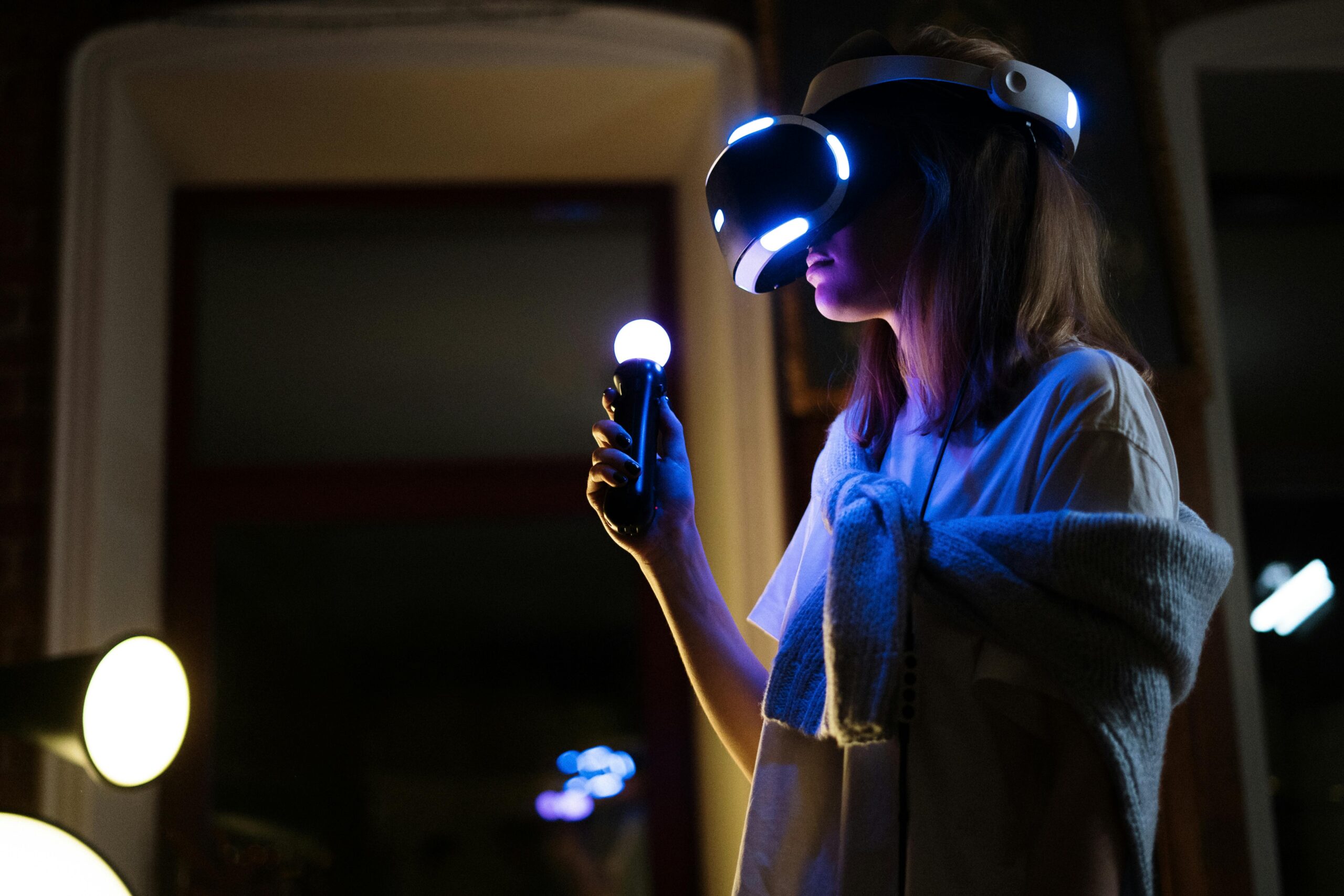Augmented Reality Applications Benefits (AR) has transcended its initial novelty to become a significant player in various industries. Augmented Reality enhances our interaction with the physical world by overlaying digital information, making it a transformative technology. Unlike Virtual Reality (VR), which immerses users in a completely virtual environment, Augmented Reality overlays digital content onto the real world, enriching our perception of reality. In this article, we’ll explore the rise of Augmented Reality, its diverse applications, and the myriad benefits it offers.
Understanding Augmented Reality (AR)
What is Augmented Reality? Defining AR Technology
Augmented Reality (AR) refers to a technology that overlays digital content—such as images, sounds, and data—onto the real world. By integrating these digital elements, AR creates an interactive experience that enhances our perception of reality. Therefore, AR combines virtual elements with the physical environment to provide a richer experience. Augmented Reality (AR) is a technology that superimposes digital content, such as images, sounds, and information, onto the physical world. This integration creates an interactive experience with Augmented Reality (AR).
How Augmented Reality Technology Works
AR technology utilizes a combination of cameras, sensors, and sophisticated software algorithms to detect the physical world and overlay digital content. For instance, AR systems employ various technologies, including cameras, sensors, and software algorithms, to detect the physical environment. Subsequently, these systems overlay digital content onto it, which users can experience through devices such as smartphones, tablets, or specialized AR glasses.

Key Technologies Behind Augmented Reality
Computer Vision in AR: Enabling Real-World Interaction
Computer vision is a crucial technology that enables AR systems to understand and interpret visual information from the real world. By doing so, AR systems can accurately place and align digital content with physical objects. Consequently, this technology is fundamental in creating seamless and immersive AR experiences. Computer vision enables AR systems to understand and interpret visual information from the real world. Consequently, this capability allows digital content to be accurately placed and aligned with physical objects.
The Role of Sensors and Cameras in AR
Sensors such as accelerometers and gyroscopes, along with high-resolution cameras, capture detailed data about the user’s environment and movements. This data is essential for AR applications to provide accurate and responsive interactions. For example, sensors help in tracking the user’s position and orientation, which is crucial for placing digital content correctly in the real world.
Popular AR Software Platforms: ARKit and ARCore
Platforms like ARKit by Apple and ARCore by Google offer developers robust tools and frameworks to create AR experiences. By simplifying the development process, these platforms make it easier to build and deploy AR applications across various devices. As a result, they contribute to the widespread adoption of AR technology.
Applications of Augmented Reality Across Various Sectors
Augmented Reality in Gaming: Transforming Interactive Play
Augmented Reality has revolutionized the gaming and entertainment industries. For instance, games like Pokémon GO have set new standards by blending digital characters with the real world. This integration not only enhances user engagement but also provides a more immersive and interactive gameplay experience. Augmented Reality (AR) has revolutionized the gaming industry with games like Pokémon GO.
Enhancing Retail and E-Commerce with Augmented Reality
In retail and e-commerce, AR enables customers to visualize products in their own space before making a purchase. For example, furniture retailers use AR apps to let users see how a piece of furniture would look in their home. This feature improves decision-making and enhances customer satisfaction by providing a more realistic preview of products.
AR in Education: Interactive and Engaging Learning Tools
Educational applications of AR offer interactive and engaging learning experiences. Medical students, for example, can use AR to practice surgical procedures in a simulated environment. This practical application helps students acquire skills and knowledge in a controlled and immersive setting.
Revolutionizing Healthcare with Augmented Reality
In healthcare, AR significantly aids in complex surgeries by overlaying critical information, such as a patient’s internal anatomy, directly onto the surgeon’s field of view. As a result, this enhances both precision and surgical outcomes. Consequently, it supports more accurate and effective medical procedures.
Real Estate Innovations: Virtual Tours and Property Visualization
Real estate professionals use AR to create virtual property tours, allowing potential buyers to explore properties remotely. This capability provides a comprehensive view of the space and enhances the property search experience without requiring physical visits. As a result, it streamlines the home-buying process and offers greater convenience.
Benefits of Augmented Reality
Enhancing User Experience with Augmented Reality
AR significantly enriches user experiences by combining digital and physical elements. This interactive approach leads to more engaging and memorable experiences, whether in gaming, shopping, or learning. By blending the virtual with the real, AR creates a unique and immersive user experience. Augmented Reality (AR) provides a richer and more interactive experience.
Improving Accessibility Through AR Technologies
AR enhances accessibility by overlaying information and navigation aids onto the real-world view. For instance, navigation apps can provide directions directly in the user’s line of sight, making it easier to find their way. This feature improves usability and helps users interact with their environment more effectively.
Increasing Efficiency with Augmented Reality Solutions
In industries like manufacturing and maintenance, AR provides real-time data and step-by-step instructions. By offering these resources, AR helps workers perform tasks more efficiently and accurately. Consequently, it reduces errors and increases productivity in various professional settings.
Cost Savings Through Virtual Simulations and AR
AR can lead to significant cost savings by reducing the need for physical prototypes and extensive training. For example, virtual simulations can replace expensive physical models and on-site training. This cost-effective approach benefits businesses by lowering expenses and improving overall efficiency.
Fostering Creativity and Innovation with AR
AR encourages creativity by allowing developers and designers to craft unique experiences that blend digital and physical elements. This innovative capability opens new possibilities for creating novel applications and solutions. As a result, AR fosters a culture of experimentation and creativity in technology development.
Challenges and Considerations in Augmented Reality
Addressing Privacy Concerns in AR Applications
AR applications often collect personal data and information about the user’s environment. Ensuring robust privacy measures and data protection is essential to maintain user trust and comply with regulations. Addressing these concerns is crucial for the continued adoption of AR technology. Augmented Reality (AR) applications often collect personal data and information about the user’s environment.
Overcoming Technical Challenges in AR Technology
Technical limitations, such as device capabilities, network connectivity, and environmental factors, can impact AR performance. For example, the quality of AR experiences can vary based on the hardware used and the conditions of the environment. Ongoing advancements are necessary to address these limitations and improve the technology’s reliability.
Designing Intuitive User Experiences in Augmented Reality
Creating intuitive and user-friendly AR experiences is crucial for widespread adoption. Developers must focus on designing applications that are easy to use and provide clear value to users. Ensuring that AR applications are accessible and beneficial is key to achieving broader acceptance.

The Future of Augmented Reality
Future Advancements in AR Hardware and Devices
Future advancements in AR hardware, including more sophisticated AR glasses and headsets, are expected to enhance the quality and usability of AR experiences. These developments will contribute to more immersive and practical applications, expanding the potential of AR technology. Future developments in Augmented Reality (AR) hardware, such as more advanced AR glasses and headsets.
Integrating AR with AI and IoT: Emerging Trends
AR will increasingly integrate with Artificial Intelligence (AI) and the Internet of Things (IoT), leading to more intelligent and responsive applications. This integration will create innovative solutions that enhance user interactions and automation, driving the evolution of AR technology.
Expanding AR Applications Across Industries
As AR technology matures, its applications will expand into new industries, offering innovative solutions and transforming various aspects of daily life and work. The continued evolution of AR will unlock new possibilities and enhance its impact across different sectors.
Conclusion
Augmented Reality is rapidly advancing, with applications spanning gaming, retail, education, healthcare, and more. The benefits of AR, including enhanced user experiences, improved efficiency, and cost savings, highlight its potential to revolutionize our interactions with the world. Despite challenges such as privacy concerns and technical limitations, the future of AR looks promising. Ongoing advancements are poised to unlock new opportunities and applications, further shaping the technology’s impact. Augmented Reality (AR) is rapidly evolving, with its applications extending across gaming, retail, education, healthcare, and more.
FAQs
What is Augmented Reality?
Augmented Reality (AR) overlays digital content onto the real world, enhancing our perception through interactive and immersive experiences.
How does AR differ from Virtual Reality (VR)?
Unlike VR, which creates a fully immersive virtual environment, AR adds digital elements to the real world. This allows users to interact with both physical and virtual elements simultaneously.
What are some popular applications of AR?
Popular AR applications include gaming (e.g., Pokémon GO), retail (e.g., virtual try-ons), education (e.g., interactive learning tools), and healthcare (e.g., enhanced surgical visualization).
What are the benefits of using AR in education?
AR enhances education by providing interactive and engaging learning experiences. It enables students to visualize complex concepts and practice skills in a simulated environment.
What challenges does AR face?
AR faces challenges such as privacy concerns, technical limitations, and the need for intuitive user experiences. Addressing these challenges is crucial for the widespread adoption of AR technology.
